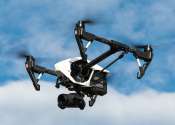Electric motor drive takes off in test flight of passenger hybrid electric plane
Engineering researchers at the University of Arkansas achieved a major milestone Feb. 20 with the successful test flight of their electric motor drive on a hybrid electric aircraft. The project could lead to significant changes ...
Mar 21, 2023
0
48









